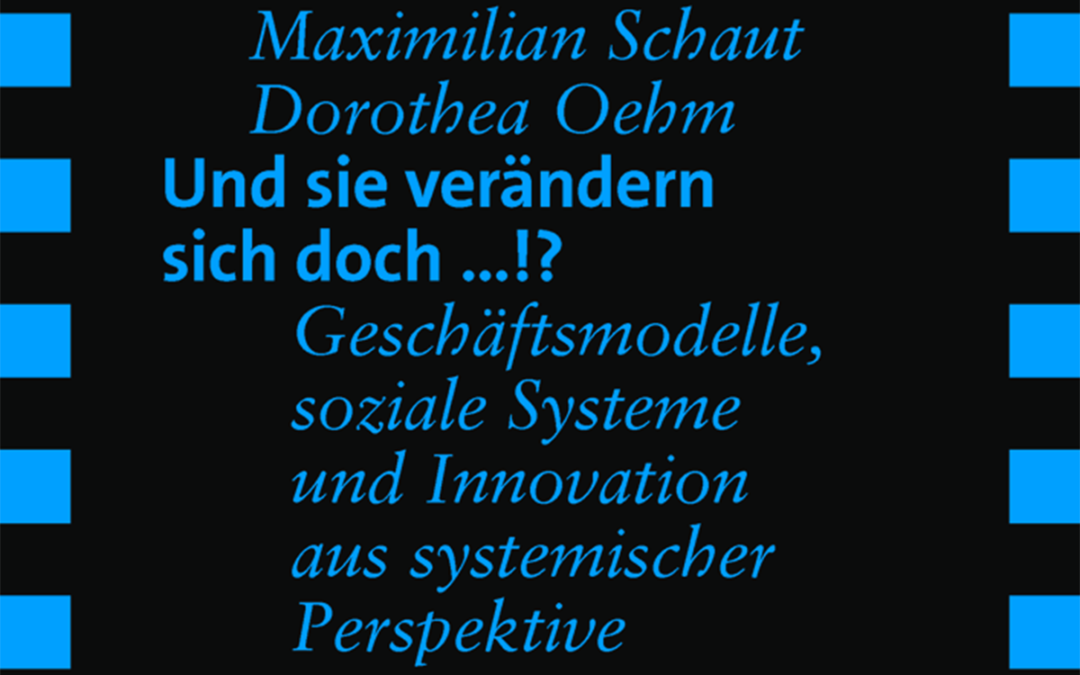Business Models, Social Systems, and Innovation from a Systems Perspective, By Maximilian Schaut and Dorothea Oehm, Carl-Auer Verlag, 2022, 157 pages
Understanding Business Models as Dynamic Social Systems And Yet They Change…!? analyzes business models as dynamic social systems that must continuously evolve to keep pace with a changing environment. The authors emphasize that business models are not merely composed of structures and processes but are shaped by communicative decisions.
Schaut and Oehm highlight that business model innovation does not happen in isolation—it is permanently embedded in an organizational context. These innovations are economic adjustments and social processes that influence existing structures, decision-making routines, and corporate cultures.
Rooted in Niklas Luhmann’s systems theory, the book provides a scientifically grounded analysis of business model innovation, offering a fresh perspective on how organizations adapt and transform.
Content and Key Themes
After introducing various business model approaches—such as resource-based, activity-based, value-based, and network-based models—the authors explore the relevance of a systemic business model theory.
This approach enables organizations to be seen as holistic systems, fostering a deeper understanding of their interactions with the environment. The book reflects on the suitability and effectiveness of this systemic perspective while providing practical insights.
At the core of the discussion are four key structural components of a business model:
- Decision Programs – What routines and rules govern the business model?
- Communication Structures – How does communication influence business model development?
- People – What role do individuals play as communicators within the system?
- Corporate Culture – How does culture either support or hinder change?
The Evolutionary Development of Business Models
A central theme of the book is the evolutionary nature of business model development. The authors argue that innovation processes do not follow a linear path but evolve through iterative loops, where strategic decisions must be continuously adapted to new circumstances. Key concepts include:
- Co-evolution & Emergence – Business models do not develop in isolation but interact with market changes, technological advancements, and societal trends.
- Irritation & Variation – External and internal impulses disrupt existing business models, necessitating adjustments.
- Selection and Destruction—Companies consciously or unconsciously decide which elements of a business model to retain or discard.
- Retention & Diffusion – Successful business model innovations become established and spread within or beyond organizational boundaries.
Throughout these processes, uncertainty remains a constant companion to change. Businesses do not operate in a stable environment; they must continuously reassess their decision-making and communication processes to maintain agility.
Resistance as a Driver of Innovation
Schaut and Oehm emphasize that resistance to change is fundamental to innovation. Instead of viewing resistance as an obstacle, organizations should see it as a valuable resource—indicating where existing structures clash with new approaches. Companies that actively engage with resistance can drive more targeted and sustainable change.
Leadership as a Shaping Force in Innovation Processes
The book does not view leadership merely as a strategic function but as a crucial factor in fostering an environment where change can thrive. This involves:
- Creating meaning and trust – Sustainable transformation requires a clear vision and a compelling purpose.
- Embracing experimentation and iterative processes – Not every innovation succeeds immediately. Companies must navigate uncertainty and approach change as a continuous learning process.
- Engaging key stakeholders – Transformation only succeeds when all relevant actors are actively involved rather than merely receiving top-down directives.
External Environmental Factors as Drivers of Business Model Innovation
The authors highlight that external forces rather than internal initiatives trigger many business model changes. Global crises, economic disruptions, and technological breakthroughs often serve as catalysts for transformation:
- Innovation is often driven by external pressure rather than internal motivation.
- Timing is critical – Companies must recognize when change is necessary to avoid falling behind.
- Flexibility is a competitive advantage – Organizations that rapidly adapt to new circumstances are more likely to succeed in the long run.
Conclusion and Recommendation
This book offers a comprehensive systems-theoretical analysis of business models and their innovation processes. I highly recommend it to leaders, consultants, organizational developers, researchers, and students who seek to understand why change initiatives often fail—and how to create conditions for long-term transformation success.


Recent Comments